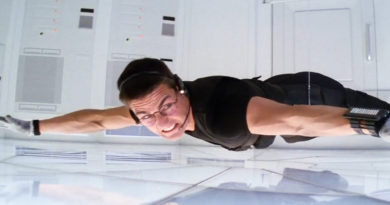Why over50s should be on their bikes this winter
Why over 50s should get back on their bikes this winter
It’s never too late to become a cyclist; after all, it’s a leisurely activity suitable for all ages and is a great way of keeping fit. Alternatively, many over 50s may be lapsed cyclists and haven’t headed out for a ride for a while. According to Cycling UK, just as many cyclists are aged between 50-59, as 21-29! Clearly, the over 50s refuse to be beaten by the younger generation!
“Unlimited Breaks. Riding solo can help you take as many breaks as you want. This has the benefit of giving you some time to think about your life while gazing at the beauty of nature. Sports online is associated with bikes and cycling and has proved that you can do almost anything on the go. To making grocery online. Everyone needs some me time even business people, isn’t it? You need to have moments to digest everything that is happening and what happened in your life.”
How to prepare yourself for heading out on the road
It’s never too late to reintroduce yourself back into a life of cycling. But before you do so, you may also want to consider investing in some new equipment to make sure you’re safe on the roads. Helmets are obviously essential but some upmarket models also allow you to attach cameras or lights to ensure that you are as safe and visible as possible. Reflective clothing also helps to alert other road users to your presence in the dark, this is especially important in the winter months when it’s dark for most of the early mornings and evenings. The earlier drivers, pedestrians and other cyclists spot you, then the easier it is for everyone to stay safe.
Cycle Claim Line, a specialist in cycle claims, adds that it is especially important that those returning to cycling after a long period possess all the skills necessary skills for heading out on two wheels, especially during the winter months. These skills ensure that cyclists have the confidence to be assertive and safe whilst on the road, which is vital during the winter when visibility is low. Basic bike maintenance skills should be a requirement for all cyclists, as ensuring that you know how to maintain the quality of key parts such as the tyres and the brakes is crucial to keeping your bike in a roadworthy condition.
During winter you should consider upgrading to thicker tyres which will provide improved grip on the potentially wet or icy road – this helps to reduce the risk of sliding and helps to maintain your balance therefore reducing the risk of accidents.
It’s also vital that you ensure that your bike’s brakes are in perfect working condition as the road conditions and weather can affect the effectiveness of the brakes. The distance and time it takes you to slow and stop is increased in poor weather conditions which can make cycling more dangerous if you need to come to a stop suddenly to avoid a hazard.
What should I watch out for when cycling?
The biggest concern for all road cyclists should be ensuring that they are visible to other road users. This is particularly important when you are around heavy good vehicles (HGVs) and other large vehicles such as buses. Often these large vehicles have substantial blind spots so even if you think that your position on the road is obvious, it may be the case that you haven’t been spotted by other drivers. This is a major issue at traffic lights and junctions. When waiting at traffic lights it is a good idea for cyclists to move well ahead of any large vehicle so you can be sure that they have spotted you. Remember, if you can’t see the driver, then they won’t be able to see you either!
Cyclists should be aware of the position of HGVs when they are approaching a junction, even if they are in a cycle lane. After all, vehicles could turn left across the cycle lane without warning. And, as HGVs are unable to make sharp turns it can seem as though they are continuing straight ahead when in fact they are planning to turn. It is best to maintain your distance if you are approaching a junction and are around large vehicles, as you can quickly find yourself in a hazardous position if you are not paying attention.
The importance of being wary of HGVs is evident from research by Cycle Claim Line that indicates that around 80% of cycling fatalities are caused by HGVs turning left at a junction and colliding with a cyclist.
A good cyclist is always aware of other road users, including pedestrians, as a hazard can suddenly appear at any time. Assertive cyclists are able to spot a potential danger earlier, which allows them more time to avoid the situation and stay safe. This could include pedestrians suddenly walking out into the road as well as passengers opening parked car doors without checking for passing cyclists.
It’s normal to be a little apprehensive when cycling on busy streets for the first time. If you’re concerned about the traffic then you can use apps or websites such as CycleStreets to help you find a quieter route and enjoy a more relaxing ride.





